How can you feed peppers after planting in the ground for a rich harvest
It is important to know how to feed the peppers after planting in the ground and how to care in order to collect a large, high-quality crop and not ruin the plant.
Preparing for transplant
Seeds begin to sow two months before transplanting the seedlings into separate pots or other small containers at a distance of 1.5 cm. It is preferable to place the seeds in a wet cloth for 2 days. Cover the planted seed containers with foil to create a greenhouse effect.
Already the seedlings themselves need nutrition. The first feeding should occur when two leaves appear on the sprout. Mineral fertilizers or self-made compost from organic components are suitable. The use of fresh manure is not permitted at this stage.
Re-feeding is performed after another two weeks. By this time, at least five leaves should appear on the sprouts. Urea mixed with potassium monophosphate is often used. You can buy ready-made mineral fertilizers for pepper, for example, Krepysh, Ideal, Aquadon-micro.
It is useful to replace mineral fertilizers with organic feed at any stage of plant development. Can be treated with mullein with water or chicken droppings with water.
At the beginning of summer, the seedlings are moved to open ground - it is desirable that the weather is not too sunny. You need to plant each bush in the garden at a distance of 35 cm. You can not choose a shady area. The plant does not like drafts and strong winds. The hole is dug not very deep and nitrogenous, potassium, phosphate fertilizers... One bush is carefully taken from the seedlings together with an earthen lump.

14 days after planting, the plant will take root, it will be possible to carry out the first feeding with mineral fertilizers or poultry droppings. Can be treated with mullein diluted with water and superphosphate added. Purchased solutions are also suitable, for example, Sudarushka or Ideal.
Useful formulations
It is even more necessary to feed pepper in the open field. To decide how to fertilize the pepper, you need to take into account the state of the bush, the soil in which the vegetable grows, and the stage of development.
In order for the peppers to feel great in the ground when planting, you need to prepare the soil. You can buy soil or prepare the growth medium yourself. At the same time, a great benefit of peat oxidant is noted:
- thanks to this component, the earth becomes soft, porous;
- peat is a natural antiseptic;
- retains nutrients in the soil;
- the need for peat is traced when a crust forms on the soil surface.
How to use fertilizer correctly? There are many tips from agricultural technicians on how to use plant food: “If you scatter peat over the area, there will be no benefit.Before planting the peppers, I use one of the recipes for preparing the soil to meet the sprouts. "
Fertilizer can be applied at any time of the year. There are several options for how to properly prepare the ground:
- They take equal parts of humus, peat and ordinary soil, add charcoal and dilute with superphosphate.
- In equal amounts, you can take humus, peat, river sand and ordinary soil.
- You can make a mixture based on peat, river sand and soil (the components are taken in equal proportions). To impregnate the mixture, you will need urea, potassium sulfate and superphosphate.
The absorption of trace elements occurs not only through the roots, but also through the leaves. Foliar dressing of pepper is prepared by adding ammonium nitrate or potassium sulfate to a bucket of water. The prepared solutions are diluted with water intended for watering plants. You need to take 1 liter of solution and mix with 10 liters of liquid.

Superphosphate is popular, which needs about 60 g. The composition is poured with hot water, left to infuse for a day. The resulting solution is filtered and diluted in 9 liters of water. For spraying, it is convenient to use a spray bottle.
Variety of types and cases
After planting in the ground, you need to feed the pepper correctly. It is recommended to alternate fertilizer compositions. You need to know, for example, how to feed the pepper during flowering or when problems arise.
To obtain juicy and sweet fruits, the bushes can be processed with nitroammophos, preferably in spring. The first feeding of peppers should be done a couple of weeks after planting the seedlings. For 10 liters of water, you need to take 40 g of fertilizer. We water the beds with a similar composition.
There are a wide variety of outdoor pepper fertilizers. Top dressing of pepper after planting includes several stages:
- feeding pepper during flowering consists in using nitrogen compounds;
- during the period of the appearance of ovaries and the first fruits, it is useful to treat the soil with ash (ash fights bacteria and fungi);
- calcium deficiency in the soil is replenished with calcium nitrate 0.2%;
- throughout the season and during fruit formation, phosphorus fertilizers can be applied.
Even in the early stages, the sweet pepper bush needs calcium to grow. Without it, the plant may rot, the ovaries will fall off, and growth will stop. If you do not use the necessary feeding in time, the plant will die.
Normal growth also depends on potash fertilizer for the pepper. Potassium is responsible for the movement of nutrients from the soil throughout all parts of the plant. With a lack of this component, growth slows down, the tips of the leaves turn black and dry out. Potassium is found in furnace ash.
2-3 weeks after the first feeding, the time for the second feeding of peppers comes. By this time, the ovaries should already have formed. If for the first time mineral feed was used, now it is necessary to process it with an organic composition, or vice versa.
During flowering and fruiting, it is best to use organic fertilizers. For this purpose, for example, 1 kg of manure and 500 g of bird droppings are soaked in a bucket of water for 5 days. You can add 50 g of potassium monophosphate or purchased Sudarushka fertilizer to the resulting mixture for peppers.

How to fertilize the plant if problems arise? If the pepper in the open field begins to shed its leaves, grows poorly, withers, it is necessary to exclude the lack of trace elements or an excess of minerals.
The tactics of action depend on the signs:
- if the leaves become dull, pale green or even gray, it means that there is a lack of nitrogen in the ground (it should be sprayed with urea);
- if the ovaries fall off, then spraying with boric acid is necessary;
- lack of phosphate leads to poor fruit development (superphosphate required).
To increase the yield and attract insects that pollinate, it is necessary to process the peppers during flowering with a sweet solution (100 g of sugar and 2 g of boric acid are mixed in a liter of water).
Before feeding the pepper, it must be watered with plain water. Thanks to this, the fertilizer spreads evenly and does not leave burns on the root system.
Folk recipes
Many agricultural technicians prefer to use folk remedies instead of mineral fertilizers.
Bananas
Banana peel fertilizer is very popular. Banana peels are high in potassium. For this, the peel is dried, crushed and the resulting powder is sprinkled with bushes at the base. There is an option to make a tincture. The skins of 2-3 bananas are soaked in 3 liters of water for three days. The resulting infusion should be watered with peppers.
Egg shell
Many summer residents feed the plant with eggshells, which contain a large amount of trace elements.

You can simply crush the shell and sprinkle the beds, or you can make a tincture. The shell of several eggs is crushed, poured with water and insisted for three days.
Serum
Whey is extremely useful for all cultivated plants (the product is obtained as a result of milk souring). Whey is rich in vitamin and mineral complex, a lot of protein and lactose. It nourishes the soil and fights bacteria that cause plant diseases.
The serum is used to spray the leaves with amino acids. The fertilizer composition prevents the appearance of late blight - for this purpose, it is recommended to spray the peppers immediately after planting in the ground.
Serum is not used for fertilization in its pure form. This is the only drawback of the nutritional component. Its acidic, fatty structure alters the acid-base balance of the earth. Be sure to dilute with water.
Iodine
All garden crops, including pepper, need iodine. This component improves growth, increases yield, makes fruits tasty and enriches with vitamin C. In addition, it acts as an antiseptic and increases the resistance of pepper to many diseases.
Peppers for growth can be treated with iodine solution. It is enough to dissolve two drops in a liter of water (milk whey can replace water). It is best to use an iodine serum to care for young sprouts.
After planting in open ground, you can use both non-root (whole bushes are sprayed) and root feed. For foliar feeding, it is enough to dilute two drops of iodine in 1 liter of water and spray the leaves every 1.5 weeks.
Processing peppers with milk with iodine will not only enrich the plant with useful substances, but also protect against diseases and many pests. Insects are lactose intolerant. After spraying, a protective white film is formed on the leaves, which does not allow pathogens to pass through. Mix 4 liters of water, 15 drops of iodine and 1 liter of milk.
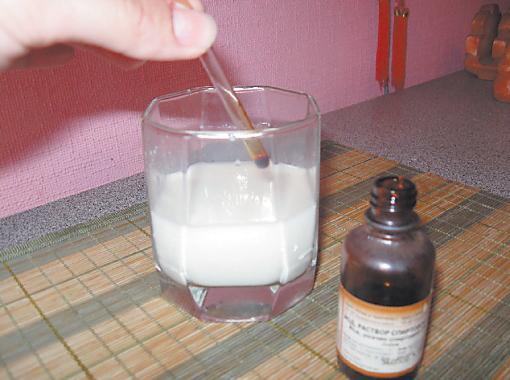
Yeast
Yeast feeding is gaining popularity. Yeast contains phosphorus, nitrogen, vitamins and minerals. Formulations with yeast improve the development of the root system, activate the activity of microorganisms in the soil, which affect a good harvest. You should be aware that yeast inhibits the action of potassium, so you need to add ash.
For the preparation of the composition, both dry and fresh yeast can be useful. Fresh yeast (1 kg) is poured with 5 liters of water per day. Before watering, the resulting solution is diluted in 50 liters of water.
Nettle
Nettle infusions are beneficial for bell pepper. This plant contains a lot of iron, magnesium, potassium, calcium, which contribute to the growth and development of pepper.
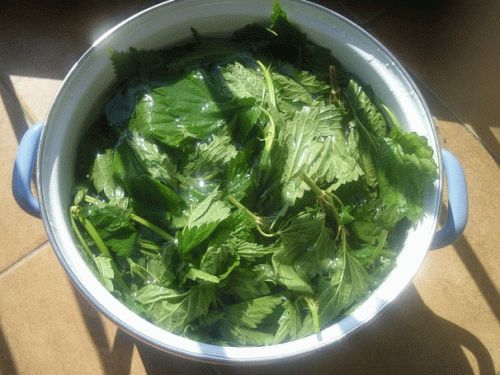
Collect the stalks of the nettle before the seeds appear, chop and place in a large prepared container. Pour water on top, cover with a lid for a while, so that the composition ferments. The infusion can be used after two weeks.Water the plants after diluting them in water in a ratio of 1:10.
Nettle infusion can be sprayed on the leaves. To do this, the fermented composition is filtered and diluted with water in a ratio of 1:20. Such treatment will protect the plant from many pests.

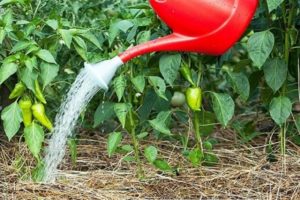


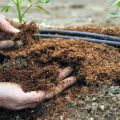
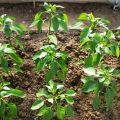
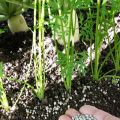
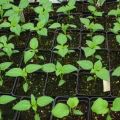
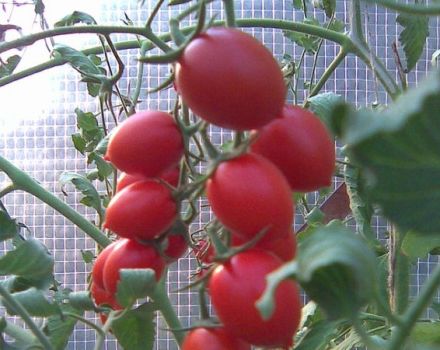
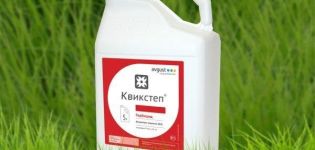
Ash is the most popular and affordable remedy; I often use it for tomatoes and peppers. I also use a growth activator BioGrow, it gives good yields even in bad weather years.